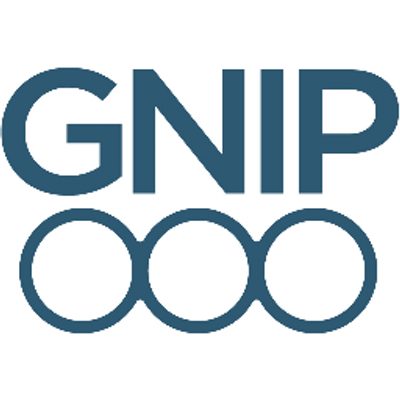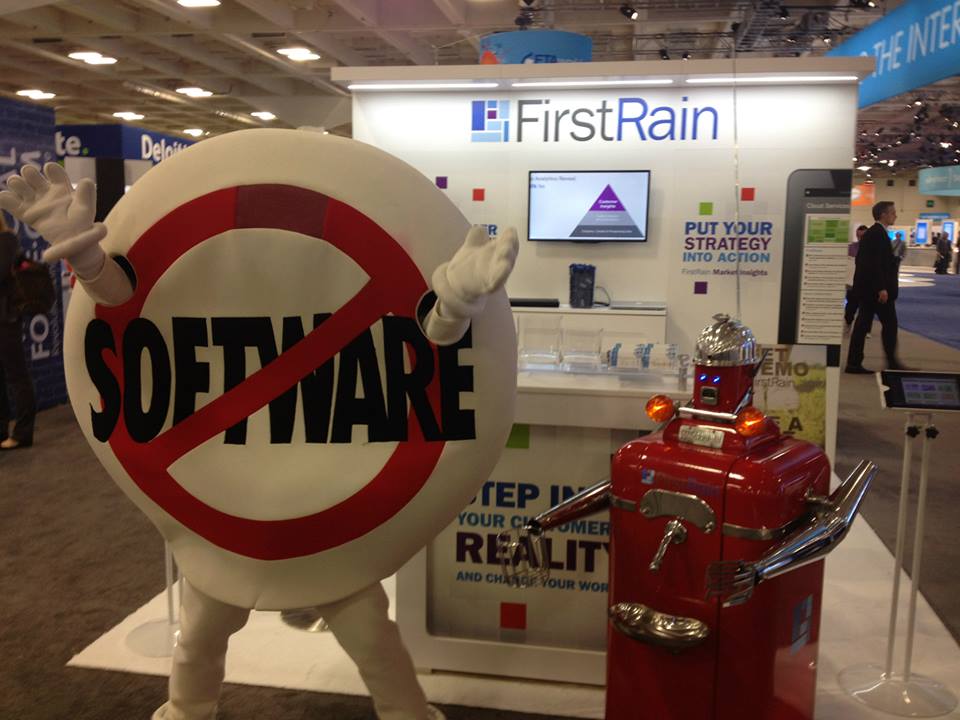
By Ryan Warren, Vice President of Market Development
The cardinal rule of sales should be: Don’t irritate your prospects! It doesn’t matter whether a potential buyer could use your services or not. If they cultivate a strong dislike for you during the pitch, they’re unlikely to go with the company you represent. Sometimes when you’re under pressure to close, you might phrase questions inappropriately, leading to the disdain of the people you’re trying to impress. Avoid ruining the outcome of the sale before you’ve even begun. To start out, here are a few questions you should avoid asking:
Do your research, avoid provoking clients, and encourage conversation rather than being pushy, and you’re likely to win the confidence of your prospective buyers.

Getting exhausted by tired old methods for finding sales leads and connecting with customers? Twitter is a fresh alternative to waiting for email registrations, and it’s a great way to provide better service to your current clients. The best sales resource is knowing your customers. In this regard, social media can be a great complement to customer intelligence analytics. Twitter’s features make it a good choice for sales reps who want to get plugged into their consumer market.
Find prospects
The best way to maximize the service is to get a platform like TweetDeck to help you organize the people you follow.
First, you’ll need to identify leads. It may take a while to build a following, but it will be worth it in the long run. Start by using the search function to look for words buyers of your product might use, says Anna Bratton for Salesforce. Follow the people who fit your customer profile.
Another good idea is to check out your competitor’s Twitter feed. If you’re lucky, they may have already done the legwork for you. If they’re not on Twitter yet, well, that’s good for you too.
Once you’ve generated a list of people to follow, organize them into lists. For instance, your competitors can have their own category. These indexes can also be used to organize potential clients by where they are in the sales cycle, suggests Bryan Kramer on the Salesforce blog. Twitter is a great tool for keeping prospects on your radar.
Look for signals
Use the search function on Twitter to identify businesses that are looking to buy a service you offer. Twitter benefits both buyers and sellers by providing a large community to answer questions. Look for users who are asking for recommendations. They will be particularly pleased to get a quick answer from you. Search for terms like “anyone recommend” or “any advice on,” says Bratton.
Keep on eye on various signals. Once again, list functions work perfectly for this. On TweetDeck you can create a list that compiles any tweet containing words you’ve identified. Look for tweets that mention name of your company, or a keyword that best represents what you do. Having a list devoted to competitors is never a bad idea. If a user mentions a competitor, specifically a negative experience with one, you have an opening to jump in and suggest your services instead.
Optimize the experience
No one likes a self-serving Twitter feed. The point of social media is to generate conversation and engagement, not to promote your own company ad nauseam.
This platform is ideal for companies seeking a thought leadership role. This means that most of what you tweet shouldn’t be directly about you at all. On Marketo’s blog, Heidi Bullock provides a useful guideline, called the 4-1-1 rule. For every tweet your company makes to promote itself, you should retweet someone else (but don’t cheat by retweeting another user’s complimentary words about your services). In addition, you should share four pieces of content from other sources. Provide insightful articles with digestible headlines that are under 140 characters. Actually, the less characters you use, the easier it will be for other to retweet you with your words intact.
Promoted posts are another strategy to consider, although this service may not even be necessary. You can use promoted tweets to target specific users. Since this is a slightly more invasive strategy than targeting users who seem specifically interested in buying, it may be wise to test the waters before rolling these out on a wide scale. Wait until there’s a big industry event underway and provide timely and engaging content like a white paper or e-book for those who may be associated with the occasion.

By Penny Herscher
Your sales team is the backbone of your company, but how do you get stellar sales reps to stick around? Turnover is an issue everywhere, but one of the secrets to sales success is finding a way to maintain rock star salespeople.
Costs of turnover
Aside from losing top talent, whenever a salesperson departs, it leaves human resources working overtime to find new talent. Recruitment can drain precious resources. In addition to onboarding and training, you will be paying significant salaries to employees who have yet to achieve full productivity. On the other hand, there are less obvious costs. When a valued team member leaves, it can cause ripples among other employees, according to Christina Gomez for Executive Board sales blog. Losing a trusted colleague can cause decreased morale and sales productivity. As a result, clients can receive gaps in continuity, and sales can be lost. Suffice it to say, you don’t want to lose salespeople, but how do you get them to stick around?
1. Hire right the first time
Do an impeccable job of hiring from the beginning. Hiring can be difficult process at the best of times, but putting in maximum effort will give you greater returns. Don’t be lazy about recruitment. Realize there are different types of salespeople and no one personality type creates the ideal salesperson. What kind of seller does your team need right now? Asking candidates to take a personality test can help to guide you in whether they’ll be a good fit, as Brittany Griffin suggests on Inside Sales. Even if a candidate seems like a winner, delve deeply into their background. Be sure to actually check references and ask follow up questions to find out if there’s anything they aren’t telling you.
2. Provide incentives for top sellers
A big problem with some companies is that they quickly advance salespeople out of vital roles. According to Griffin, a lot of businesses use appointment setters as sort of a training pool before salespeople move on to other more prestigious jobs. These valuable employees specialize in finding sales opportunities for closers and every month they remain, they become 40 percent more productive. Instead of making this an entry-level position, provide incentives for workers to remain there. Every time you advance someone from appointment setter position, you have to replace them, and you’re starting over at zero productivity. Make this a job to aim for, not just a rest stop on the way to something better.
3. Find the right climate
A good company culture can encourage salespeople to remain. According to Gomez, a judgment-oriented culture results in about 15 percent less turnover than other types of management systems. A judgment-oriented culture is defined by an organic environment that is geared more toward building relationships than a sales agenda. Such businesses are innovative and open, with guidelines but no strict rules. Give your employees space to be creative and develop their own methods and they will reward you by sticking around longer.
4. Build leadership and community
For businesses across the board, relationships among staff are the prime drivers of happiness in the workplace. Strong salespeople value good leadership and a staff that can work effectively as a team. According to a recent survey from TINYpulse, transparency is the No. 1 factor that influences employee happiness. Workers want managers to clearly outline their expectations and be open with them about what works and what doesn’t in the sales setting. Even more than that, employees value openness from supervisors, they want it from co-workers. In fact, co-workers were the single most-cited reason employees were happy in their jobs. To make sure sales teams are working together optimally, schedule frequent team-building activities.

A big pet peeve of salespeople is that they are given terrible leads by their marketing team. However, it may not be that the leads aren’t great, it may be how the salesperson is choosing to follow up on them. Think of it this way: Leads have a life cycle, like plants do. Just because a lead has peeked its head out of the ground doesn’t mean you can harvest it. Give your leads some TLC to see a maximum return on investment.
The buying cycle is changing
Buyers have already done their research before approaching a business. They could find a company through social media, search engines or other online channels. With the advent of content marketing, potential buyers could learn a lot about your company without ever having talked to you. You no longer need to seek out prospects. They’ll come to you. For this reason, prospective buyers are often at an early stage of the buying process during their first conversation with a sales rep.
A study from Marketing Sherpa Business-To-Business Demand Generation Summit found two different conclusions. Sales people need to:
1. Respond more quickly
2. Be more persistent.
Pounce quickly
Your leads are using the Internet to their advantage, and you should too. If you have data on when they were browsing, use it to make a call. The Marketing Sherpa study demonstrated that effective response times could be far shorter than most sales reps think. The likelihood of reaching a new sales lead drops 10 times if you wait longer than an hour after they first show interest. After an hour, the odds decrease another 6 times.
Be persistent
According to Michael Boyette for Marketo, about 45 percent of B2B leads end up buying. Out of 100 leads handed down by the marketing department, roughly 45 of them will be sales opportunities and about 15 of those will actually close.
The mistake is in thinking that the remaining 30 leads are dead. According to Boyette, they might just not be ripe enough. Depending on where they are in the buying cycle, they might just not be ready to commit. It doesn’t meant you should stop trying. Keep in touch with green leads. If you were gardening, you wouldn’t water plants once and then stop. If the apples were too green when you went out to pick them, it doesn’t mean they’re worthless – they just need some more time.
Nurture your leads
If potential customers aren’t quite ready to buy, they may not be ready to talk to a sales rep just yet. Keep building brand awareness for your products by sending them messages and content. Doing this can actually speed up the buyer’s timeline, making them likely to purchase more quickly. According to MarketingSherpa data cited by Marketo, lead nurturing can lead to a 45 percent increase in return on investment. Knowing your customers can help you determine when and how to approach leads when they are reaching fruition. Use customer research to determine what their buying cycle might look like before trying to close the deal.

Content marketing is the probably the biggest marketing trend of 2013. It seems likely that content will remain the biggest marketing industry buzzword going into 2014. Do you have a resolution for the New Year? Maybe it’s time for your marketing department to come up with a collective resolution: successfully implementing a content marketing strategy in 2014.
You may be thinking content marketing doesn’t work for B2B, and you’re not exactly wrong. A lot of companies haven’t figured out how to get content marketing to work efficiently for them. The truth is, B2B content marketing brings a unique set of challenges. However, provided you know what you’re in for, the return on investment can be just as high as it is for B2C.
The challenges of B2B content marketing:
How to implement a successful content strategy
Because of these challenges, it’s not surprising that about half of companies surveyed by Content Marketing Institute reported they had no content marketing strategy. Given the lag in adoption of this marketing channel, those firms that do find a way to implement a successful content marketing strategy will be ahead of the game.
Here are some tips to get started:
When done right, these strategies will help you generate better leads for your sales team. Don’t let your fears hold you back from the jumping on the content marketing bandwagon.

By Ryan Warren
Sales and marketing departments often butt heads. Despite them working toward the same goal, the lack of communication between employees in these divisions can often lead to decreased efficiency.
3 things salespeople wish marketers knew
Sales can be a difficult job. If salespeople could put one thing on their holiday wish lists, it would probably be that marketers try to empathize with their position more. Instead of buying your sales colleagues ornaments or chocolates this year, try giving them something they really need: a little more understanding.
1. Selling is difficult
Salespeople love to sell, but it’s a hard job. Selling is personal, says best-selling author Seth Godin. When a salesperson makes a promise, he or she has to keep it. In a similar vein, selling is highly interpersonal. Sales is like a long conversation. The salesperson can’t always tell you when a prospect is ready to buy. Often, no one knows.
2. There’s a huge difference between inbound and cold calls
No one wants to be in a situation where they have to make a cold call. As Godin puts it, the marketer’s job is to prevent a cold call scenario from ever taking place. Given how rude people in the U.S. can be over the phone, it’s no surprise that salespeople would want to avoid cold calling. A recent poll from The Atlantic Monthly demonstrated just how foul-mouthed Americans tend to be on the phone, particularly Ohioans.
3. Salespeople enjoy a good conversation-
- especially with you, the marketer! Salespeople tend to learn from conversations with each other. In turn, marketers stand to learn a lot from the salespeople who are down in the trenches.
What’s on the wish list in your sales department?
It all boils down to one big wish, and that’s known as lead qualification, according to Jeff Kalter for Business 2 Community.
The job of marketers is to generate leads, which salespeople then follow up on. However, the marketer’s job shouldn’t be over as soon as he or she has generated some interest in a product or service. As Kalter notes, this situation is lose-lose. When marketers hand over too many leads, salespeople are only able to call a few of them. Panicked about wasting time, the salesperson then throws out the rest of the leads, confident he or she can save more time by just starting over.
Instead, marketers can work to alleviate the burden by talking to leads themselves.
Building the sales-marketing relationship
First of all, realize the two departments can learn together. Both sales and marketing can benefit from B2B market research. Market insights are invaluable to understanding the customer base. Both marketers and salespeople need this knowledge to maximize performance.
Schedule regular meetings to make sure sales and marketing are both in the loop. If you already have meetings, organize break-out sessions with small portions of each team, Brad Miller suggests in an article for Search Engine Watch. In these meetings, focus on the positives. Use the time to talk about which leads the marketing department provided actually led to a sale. It’s fun to talk about success, but it’s also beneficial. Figure out how both teams can reproduce these results.
The hyper-connected digital buyer has a greater knowledge base than ever before. Sales and marketing teams need to keep up. Consumers will probably have researched your product long before you ever speak with them. This is an area where marketers can really help out their sales teams.

The demo is a central part of the sales journey. The sale relies on this one moment of perfection - or does it? There’s actually more to a successful product demo than an hour-long presentation. A good demo should be conceived like a race. Anyone who took PE as a kid knows that you don’t just step onto the track and start running. There’s a lot of hard work that goes into preparing for that moment the gun goes off. The actual race is just a small part of a longer voyage. You can think of sales like a running race with three stages: the warm-up, the race itself, and the cool-down period. Nail all three stages and you’ll likely be on your way to forging a new client relationship.
Warming up
How you prepare for your sales demo may be even more important that the moment itself. When an athlete fails to stretch her muscles before the race, she doesn’t perform as well.
The big day
You’ve completed your training and warmed up, and you’ve got your strategy all planned. Now you’re standing at the starting block ready to go. Here are some tips to nailing the race:
Concentrate on getting your prospects excited about your product and maintain your energy all the way to the finish line.
Cooling down
The race is over, but if you don’t take careful steps now, your muscles are going to ache or risk damage. The sales journey is almost over.
Running the sales race can be exhausting, but if you envision the demo as a marathon with three stages - not just a sprint - you will have a more efficient journey.

Jordan Novet at VentureBeat, a Silicon based publisher that covers disruptive technologies, recently covered FirstRain in an article about how AppExchange partners like FirstRain are continuously providing value to salesforce.com customers, as they augment and innovative on the salesforce.com platform.
Writing about the need for analytics for sales users and some of the newer features that salesforce.com have implemented like Data.com’s Social Key, Novet writes:
“Those all sound like valuable features. But they haven’t stopped a company called FirstRain from drawing on a wide swath of online sources to provide the latest insights on a Salesforce user’s customers. Earlier this year FirstRain made it easier for Salesforce users to build applications that take advantage of the analytics technology, and in October there was word of “an expanded partnership” between the companies that more deeply embeds FirstRain information into Salesforce.
Take that as additional proof that Salesforce knows it’s wise to pull in data from the outside world and clean it up for clear presentation to sales and marketing people.”
Our customers validate this everyday and our continued success as a Salesforce Partner demonstrates that indeed Salesforce knows the value partners like FirstRain can bring to their customers.
Note: FirstRain has been a salesforce.com AppExchange partner since 2010 and FirstRain Customer Insights is available through the AppExchange.

Ashutosh Joshi is FirstRain’s Principal Data Analytics Engineer. He attended The Big Boulder Initiative last month and learned some interesting things. Read on:
Last month the Big Boulder Initiative, organized by one of our vendors, Gnip came to San Francisco and I was lucky enough to go on behalf of my team. FirstRain is a Gnip Plugged in Partner and we consistently get great value from being part of the program and attending Gnip events.
The meet was attended by about 20 companies of varying size – from large companies to a few start-ups with less than 10 employees – all Gnip customers. The conference started with Gnip CEO Chris Moody giving an introductory talk about the objectives and agenda of the conference. What was different about this conference, compared to others that I’ve attended, were its objectives. The goal of the meeting was to discuss what the biggest obstacles, current and future, facing the social-data industry and what steps could be taken to remove those obstacles (boulders). Gnip recognized that it was in a unique position to understand the concerns of both the publishers – the creators of social data like Twitter and Facebook – and the companies who, like FirstRain, use that content to deliver high-value business solutions. A main focus of the Boulder Initiative events is to reach out to its customers to identify the problems they, and the industry in general, face, and to brainstorm solutions to them.
Several problems were proposed, but the biggest that emerged were:
1. Cost of Data
2. Ethics of Data Use
3. ROI to be achieved
4. Access to data
We broke up into teams and discussed short- and long-term steps to be taken around each of these areas. The problem that I found most interesting was the problem of access to data. There is so much data out there, but the access to that data is restricted to those that can afford to license the expensive pipelines. Also, because the data is costly, the primary focus of those accessing the data tends to be turning a profit. Having freer access to the data would lead to more innovation, bringing down the cost of data creation as well–which could be facilitated if the publishers could grant limited/free access to academia or non-profits.
The social data industry is in its infancy, and is still figuring out all the advantages and pitfalls of the different decisions it makes. Gnip’s Big Boulder Initiative events are valuable because they introduce standardization around social data. This includes the different properties of data, like the chain of custody and control that each individual element – the creator, publisher and multiple levels of consumers – can have over the data at different stages of data analytics and the finished product, to the ways to access the data and the rights of the consumer. It was a great to be a part of this process of discussing and proposing standards that hopefully will facilitate more innovation in an up-and-coming industry.
Unlike many other vendor conferences I have attended, it was’t about Gnip giving us demos of their latest features and then trying to sell them with a day of presentations pushing products–It turned out to be quite the contrary. At the end of the event, a board of 3 attendees was elected and they along with 9 similar board members from three more Big Boulder Initiatives around the country were tasked with acting on the solutions proposed in the conference. All in all, a good day for partners and, most importantly, long term for the users that use our services leveraging social data.

Just kidding! Let’s all just sit back and take a breath. You’re done. For now…
FirstRain had a pretty awesome DF13. We met over 1,200 people at our booth in the Cloud Expo, had a lot of in-depth discussions, and many booth visitors were very interested in setting up time after the show to learn more about how we can help them “Step into Their Customer’s Reality.”
Penny hosted two panel discussions focused on customer testimonials on Monday and Wednesday, with QTS and Cisco, respectively. These sessions were well-attended and generated a ton of great questions from the attendees. YY also led a very successful Table Talk on Tuesday about FirstRain and how to make a great app (she should know… have you SEEN FirstRain for Touch?)
Led by Chassis the Drink-Serving Robot, our booth staff had fun and worked hard. We loved getting to meet everyone and show off our FirstRain products… and had a great time explaining what a fitbit is. And what you could use those cute flip-flops for (you squeeze them!). The potentially best part of DF13 is how people reacted to Chassis. For some, you could see the trepidation and fear in their eyes as they skirted around him. Others seemed confused as they poked and prodded poor Chassis (it’s ok, he probably liked it). And I can’t even count how many pictures we took for people!
We also gave over 600 demos, which means that FirstRain will donate $1,200 to Soles4Souls to help with the relief efforts in the Philippines. We’re so happy to be able to help!
The biggest thing our customers confirmed during our many meetings and demos is that in today’s ever changing world they need ongoing real-time data analytics across the web. Salespeople need to really know their customer, and marketers need to truly understand their markets–in order to help their customers AND themselves. Like Marc Benioff repeatedly expressed, a customer-focused company is good for everyone involved, and having a firm grasp on the critical events affecting your customers is the first (and biggest) step!
So thanks to everyone for coming by our booth–see you again in 321 days!
